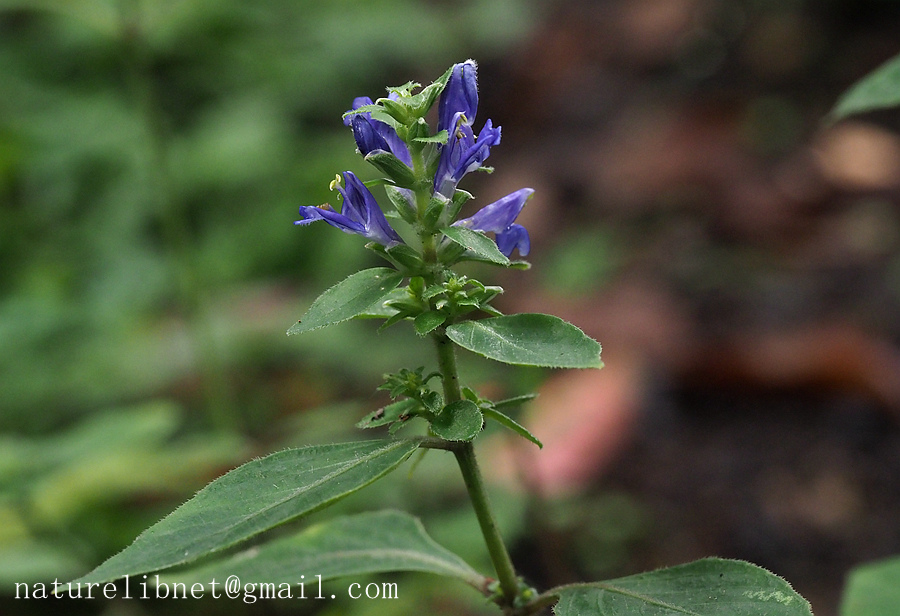- Scientific Name: Rungia densiflora H.S. Lo
- Ref: Acta Phytotax. Sin. 16(4): 94. 1978.
- Chinese Common Name: 密花孩儿草 mi hua hai er cao
- Family: Acanthaceae
- Genus: Rungia
- Distribution: Forests, streamsides; 400-800 m. Anhui, Guangdong, Jiangxi, Zhejiang.
- Type:Guangdong, Lianping, 1973-10-16,粤73 2013(Holotype:IBSC)
Herbs to 50 cm tall. Stems stout, bifariously retrorsely pubescent. Petiole 0.5-2 cm, pubescent; leaf blade elliptic-ovate, ovate, or ovate-lanceolate, 2-8.5 × 1-3 cm, papery, both surfaces glabrous or minutely hirsute, secondary veins 6-8 on each side of midvein, base cuneate and slightly decurrent onto petiole, margin entire, apex acuminate to slightly obtuse. Spikes terminal or axillary, sessile, to 3 cm; bracts 4-ranked, all fertile, homomorphic, usually spatulate to sometimes obovate, 7-11 × 1.5-3 mm, 3-veined, margin not hyaline but ciliate and densely so apically, apex rounded to obtuse; bracteoles 2, obovate, ca. 6 × 2-3 mm, margin hyaline. Calyx ca. 4 cm; lobes linear-lanceolate. Corolla 1.1-1.7 cm, outside pilose; tube basally cylindric for 6-9 mm; lower lip oblong, 5-8 mm, apex 3-lobed, central lobe smaller; upper lip triangular-ovate, erect, shortly 2-lobed. Staminal filaments 5-7 mm, glabrous; anther thecae ovoid. Capsule ca. 6 mm. Fl. Sep-Oct, fr. Nov-Dec.(Flora of China)
